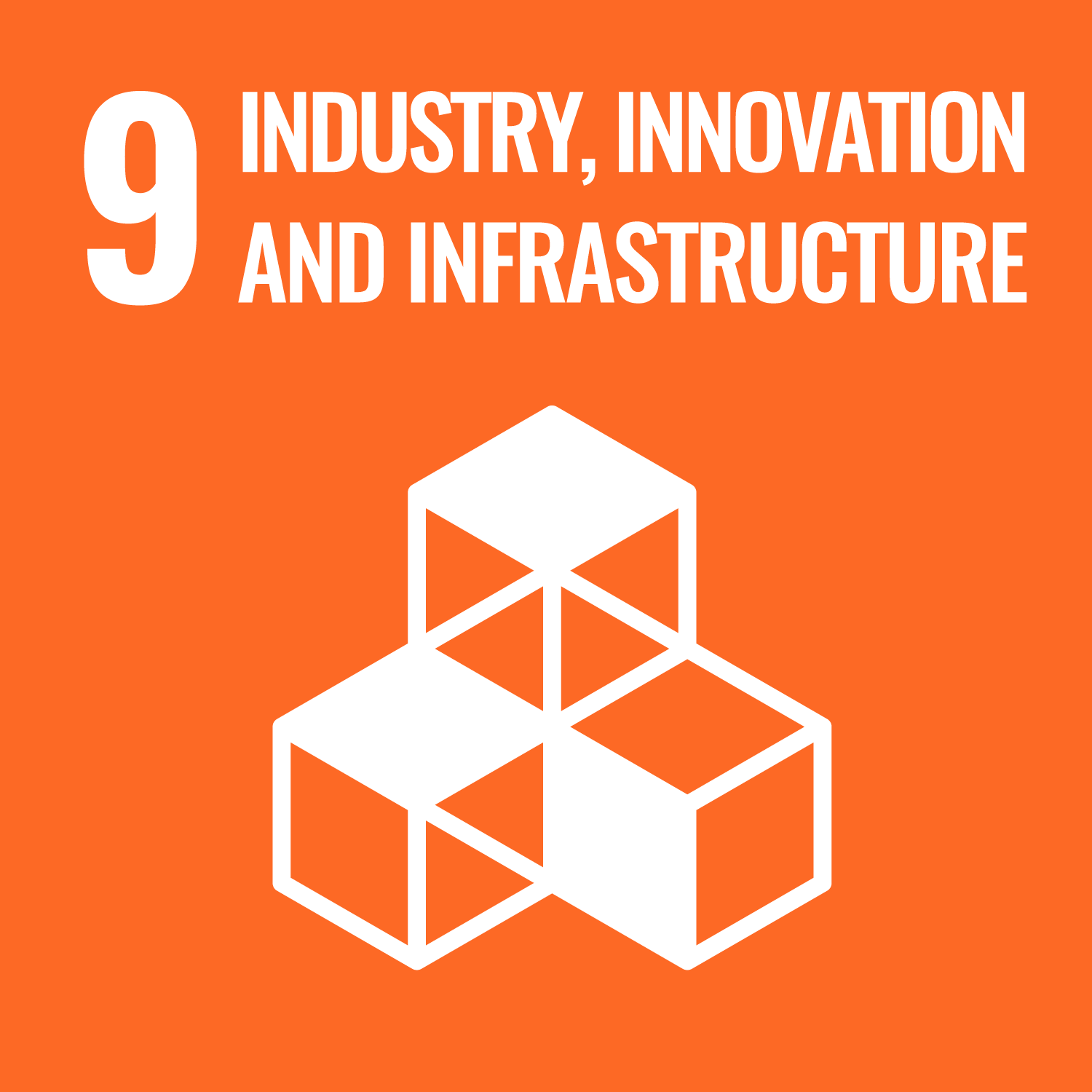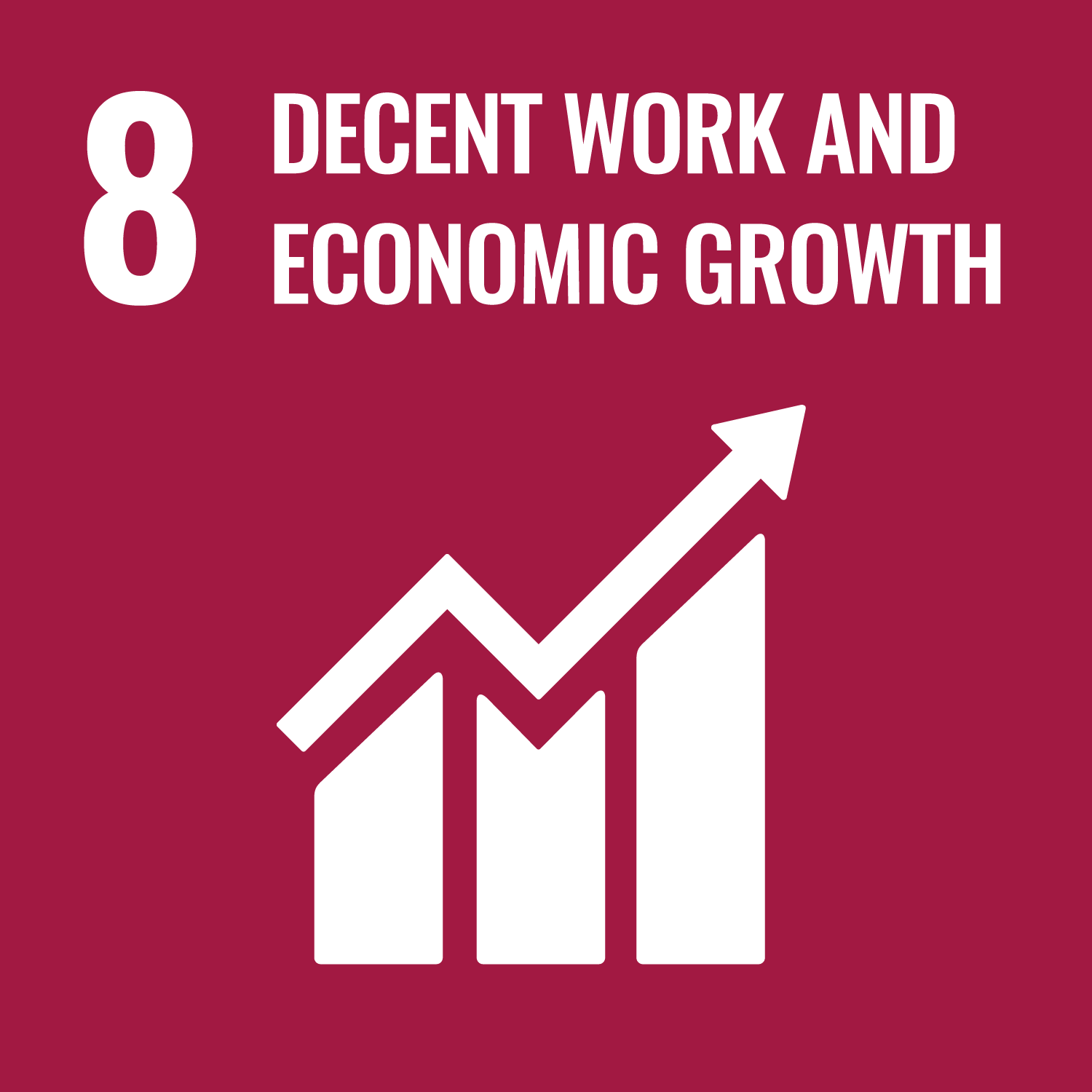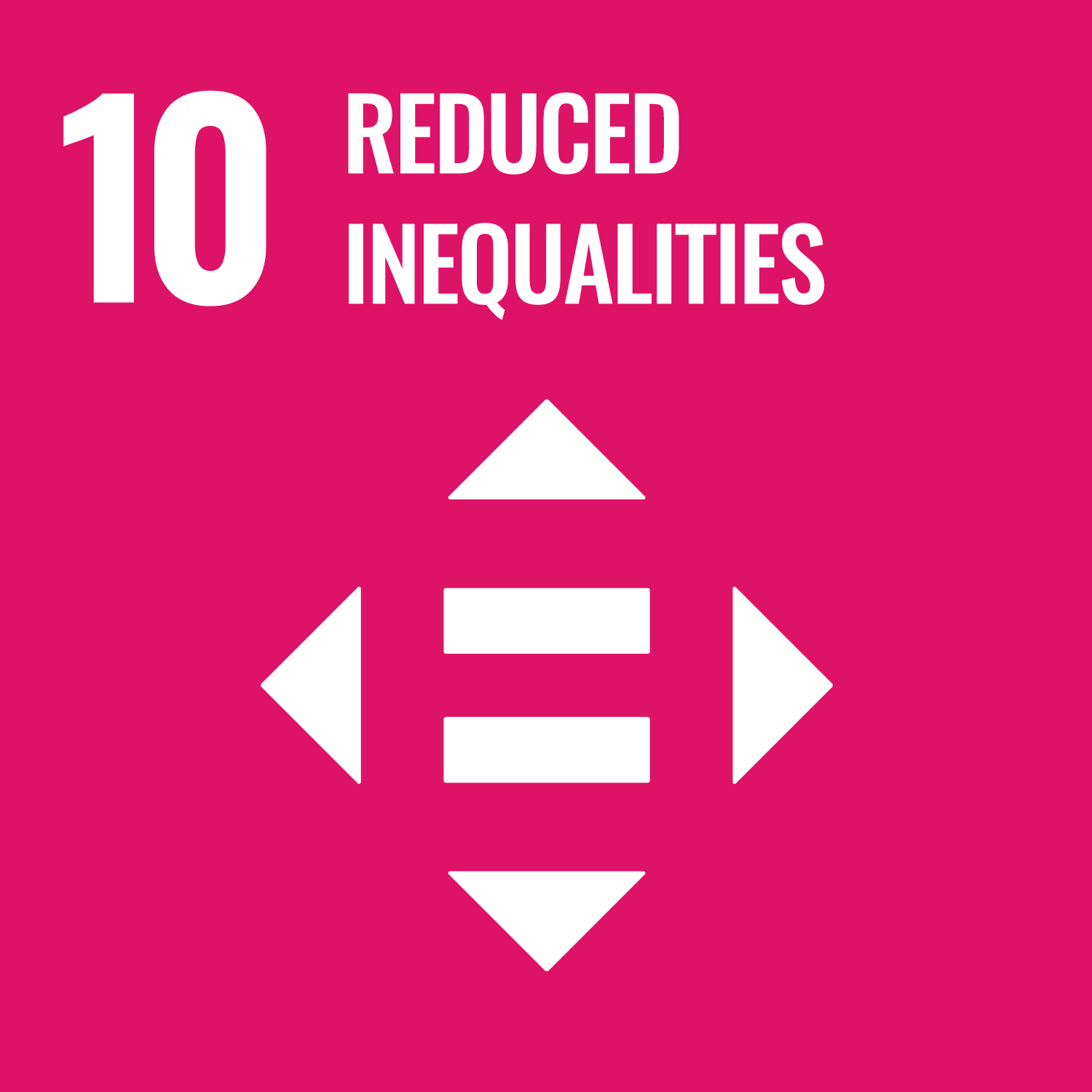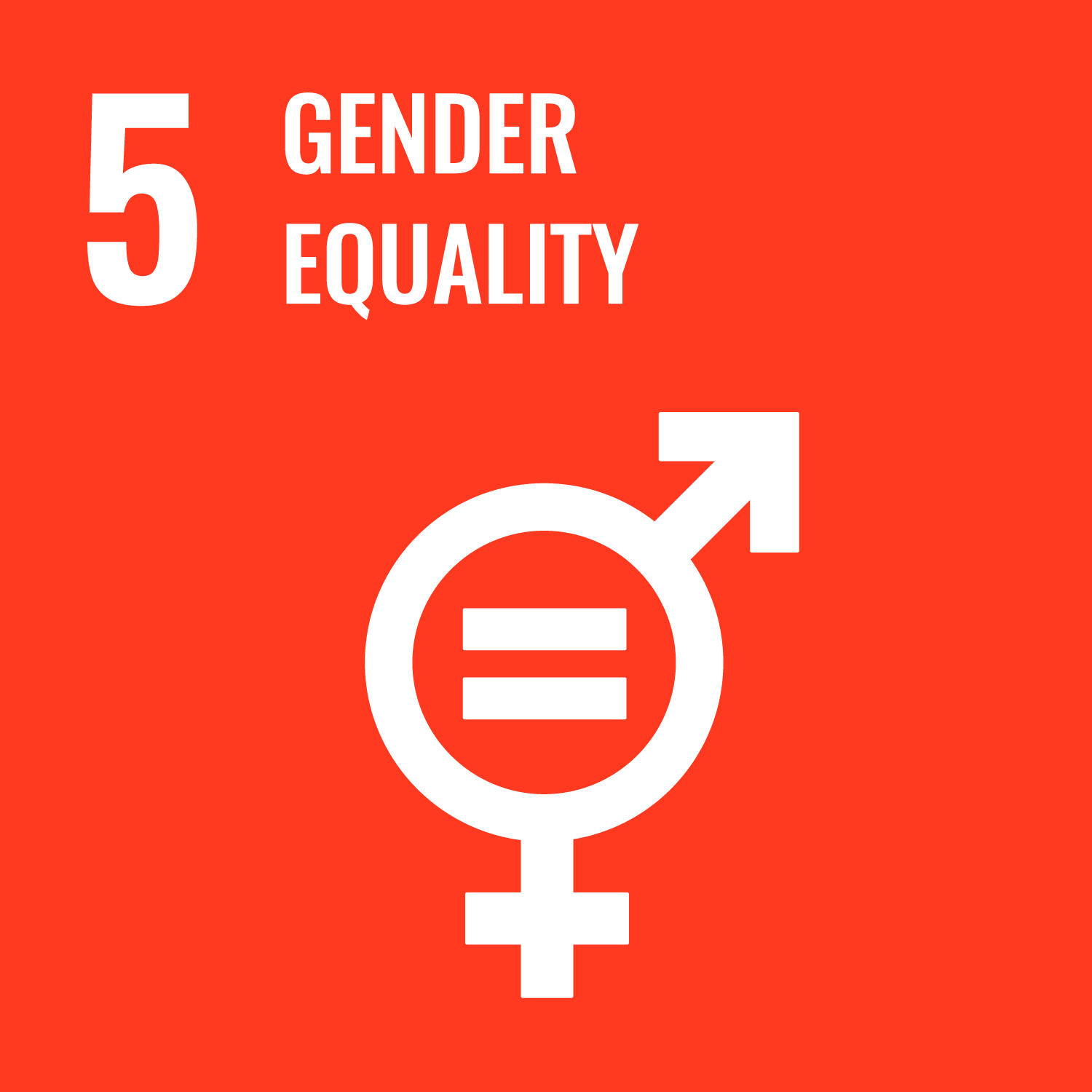ESG Data (As of June 18, 2025) [PDF 232 KB/2page]
| ID | Item | Related SDGs | KPI | Target | FY2022 | FY2023 | FY2024 | FY2025 |
|---|---|---|---|---|---|---|---|---|
| 1 | Improve energy efficiency and reduce energy usage |
 |
Greenhouse gas (GHG) emissions (Scope 1 and Scope 2) | Net zero (FY2051) |
97.3 tCO2 | 91.3 tCO2 | 98.7 tCO2 | 154.1 tCO2 |
| Greenhouse gas (GHG) emissions (Scope 1 and Scope 2) per unit of net sales | ー | 0.0120 (tCO2 / million yen) | 0.0101 (tCO2 / million yen) | 0.0097 (tCO2 / million yen) | 0.0139 (tCO2 / million yen) | |||
| Greenhouse gas (GHG) emissions (Scope 3) | Net zero (FY2051) |
ー | 1,002.8 tCO2 | 1,147.7 tCO2 | 1,471.8 tCO2 | |||
| Energy consumption (crude oil equivalent) | Reduction on an ongoing basis | 48.7 (kl / year) | 49.9 (kl / year) | 48.2 (kl / year) | 62.0 (kl / year) | |||
| Energy consumption (crude oil equivalent) per unit of net sales | ー | 0.0060 (kl / million yen) | 0.0054 (kl / million yen) | 0.0048 (kl / million yen) | 0.0056 (kl / million yen) | |||
| Reduction rate of copy paper used | Reduction on an ongoing basis | 14.5% reduction |
5.9% reduction |
6.2% reduction |
6.3% increase |
|||
| 2 | Contribute to carbon neutrality through business activities |
  |
Share of engineers placed in carbon neutrality projects among all engineers | 50.0% |
41.3% |
46.1% |
48.3% |
51.3% |
| ID | Item | Related SDGs | KPI | Target | FY2022 | FY2023 | FY2024 | FY2025 |
|---|---|---|---|---|---|---|---|---|
| 3 | Resolve social issues by creating jobs |
   |
Share of carbon neutrality recruitment targets for new graduates and career hires | 55.0% |
40.1% |
50.0% |
46.1% |
47.9% |
| 4 | Respect human rights |
  |
Number of serious human rights issues | None | None |
None |
None |
None |
| Number of discrimination incidents | None | None |
None |
None |
None |
|||
| Percentage of employees who have received harassment training | 100.0% | 100.0% |
100.0% |
100.0% |
100.0% |
|||
| Number of inquiries to harassment helpline | Appropriate response to inquiries | None |
None |
1 |
None |
|||
| 5 | Promote diversity and inclusion |
  | Share of female employees (engineers) | 10.0% or more | 3.7% |
4.1% |
3.7% |
4.1% |
| Share of female employees (administration) | Increase on an ongoing basis | 31.4% |
27.6% |
33.8% |
38.3% |
|||
| Number of female employees (engineers) | ー | 39 |
47 |
44 |
51 |
|||
| Number of female employees (administration) | ー | 32 |
35 |
45 |
57 |
|||
| Share of female employees (engineers) among new employees | Increase on an ongoing basis | 3.0% |
6.4% |
5.2% |
6.3% |
|||
| Share of female employees (administration) among new employees | Increase on an ongoing basis | 66.7% |
27.3% |
47.1% |
73.3% |
|||
| Appointment of female employees (engineers) to managerial positions | 3 or more | 2 |
2 |
2 |
2 |
|||
| Appointment of female employees to managerial positions | 10 or more | 6 |
10 |
10 |
13 |
|||
| Share of female employees in managerial positions | Increase on an ongoing basis | 3.7% |
3.4% |
3.1% |
5.1% |
|||
| Share of female directors*1 | 30.0% or more (FY2031) |
0.0% |
0.0% |
0.0% |
0.0% |
|||
| Wage difference between male and female employees (overall) | Narrow the difference | Male 100.0%:Female 92.8% |
Male 100.0%:Female 94.5% |
Male 100.0%:Female 89.2% |
Male 100.0%:Female 89.5% |
|||
| Wage difference between male and female employees (engineers) | Narrow the difference | Male 100.0%:Female 99.2% |
Male 100.0%:Female 96.5% |
Male 100.0%:Female 95.8% |
Male 100.0%:Female 94.4% |
|||
| Wage difference between male and female employees (administration) | Narrow the difference | Male 100.0%:Female 71.0% |
Male 100.0%:Female 71.0% |
Male 100.0%:Female 71.9% |
Male 100.0%:Female 71.9% |
|||
| Average years of service of male employees (engineers) | Increase on an ongoing basis | 5.91 years |
6.15 years |
6.50 years |
6.30 years |
|||
| Average years of service of male employees (administration) | Increase on an ongoing basis | 10.69 years |
10.60 years |
10.95 years |
11.3 years |
|||
| Average years of service of female employees (engineers) | Increase on an ongoing basis | 3.41 years |
3.37 years |
4.03 years |
3.9 years |
|||
| Average years of service of female employees (administration) | Increase on an ongoing basis | 7.56 years |
8.34 years |
7.12 years |
6.3 years |
|||
| Average overtime hours (engineers) | ー | 16.9 hours |
17.9 hours |
18.1 hours |
17.7 hours |
|||
| Number of childcare leave days taken by male employees (average) | ー | 44.0 days |
79.5 days |
42.5 days |
48 days |
|||
| Usage rate of childcare leave (male employees) | 30.0% or more (FY2029) |
12.5% |
30.8% |
50.0% |
46.7% |
|||
| Usage rate of childcare leave (female employees)*2 | 80.0% or more (FY2029) |
100.0% |
100.0% |
66.7% |
200% |
|||
| Usage rate of nursing care leave (male and female employees) | 15.0% or more (FY2029) |
1.2% |
7.4% |
13.7% |
8.4% |
|||
| Share of non-Japanese talents | Recruitment on an ongoing basis | 1.4% |
1.0% |
1.4% |
1.9% |
|||
| Share of elderly employees (60 years of age and older) | Recruitment on an ongoing basis | 1.4% |
1.4% |
1.3% |
1.3% |
|||
| Employment rate of employees with disabilities | 2.30% or more (legally required employment rate) | 2.40% (as of June 1, 2021) |
2.42% (as of June 1, 2022) |
2.67% (as of June 1, 2023) |
2.43% (as of June 1, 2024) |
|||
| Percentage of the Company’s former employees who used job change assistance program | ー | 0.8% |
1.7% |
2.3% |
1.9% |
|||
| Share of regular employees hired mid-career | ー | 2.0% |
4.8% |
7.7% |
4.0% |
|||
| Number of employees | ー | 1,180 |
1,276 |
1,321 |
1,397 |
|||
| Number of temporary employees (average) | ー | 10 |
16 |
24 |
30 |
|||
| 6 | Develop and secure promising talents |
  |
||||||
| Average hours of annual training per employee (engineer) | Same level each year | 163.9 hours |
81.2 hours |
97.0 hours |
95.7 hours |
|||
| Average cost of annual training per employee (engineer) | Same level each year | 63,000 yen |
62,000 yen |
54,000 yen |
59,000 yen |
|||
| Percentage of employees who have received talent development training | Same level each year | 89.1% |
84.8% |
87.4% |
85.0% |
|||
| Turnover rate (engineers) *Excluding retirement and turnover via the Company’s assistance program to change jobs | Under 10.0% | 10.3% |
7.7% |
8.3% |
9.7% |
|||
| Turnover rate (engineers) | ー | 11.3% |
9.6% |
10.9% |
11.7% |
|||
| Turnover rate for new graduates within three years | ー | 29.5% |
37.6% |
46.1% |
38.6% |
|||
| Periodic health checkup, consultation rate | 100.0% | 100.0% |
100.0% |
100.0% |
100.0% |
|||
| Stress check, consultation rate | 100.0% | 82.8% |
78.9% |
82.6% |
84.0% |
|||
| Annual paid leave, acquisition rate (overall) | 80.0% or more | 76.5% |
85.0% |
84.9% |
85.7% |
|||
| Annual paid leave, acquisition rate (engineers) | 80.0% or more | 76.5% |
85.2% |
85.7% |
87.1% |
|||
| Improving health literacy (through training), attendance rate | 100.0% | 100.0% |
100.0% |
100.0% |
100.0% |
|||
| BMI below 25, ratio | 75.0% | ー | 69.9% |
71.1% |
68.8% |
|||
| Presenteeism (Productivity at work decreases due to health issues)*3 | 100% | ー | 92.3% |
92.1% |
92.4% |
|||
| Absenteeism (Absent from work due to health issues) | 0.00% | 0.68% |
1.17% |
0.98% |
0.93% |
|||
| Average age | ー | 30.2 years old |
30.3 years old |
30.4 years old |
30.6 years old |
|||
| Average years of service | ー | 6.3 years |
6.5 years |
6.6 years |
6.7 years |
|||
| Number of occupational accidents | None | 3 |
10 |
6 |
9 |
|||
| Occupational accident-related fatality rate | 0.0% | 0.0% |
0.0% |
0.0% |
0.0% |
|||
| Downtime due to occupational accidents | 0.00 hours | 76.00 hours |
34.17 hours |
52.50 hours |
0.00 hours |
|||
| Percentage that received health and safety training, attendance rate | 100.0% | 100.0% |
100.0% |
100.0% |
100.0% |
|||
| Percentage of employees who have received training on diseases unique to women | 100.0% | ー | ー | 87.8% |
45.2% |
|||
| Work engagement score*4 | 2.7 | ー | ー | 2.6 |
2.6 |
|||
| Payment related to regional and social contribution | ー | 2,000,000 yen |
2,000,000 yen |
2,000,000 yen |
3,000,000 yen |
| ID | Item | Related SDGs | KPI | Target | FY2022 | FY2023 | FY2024 | FY2025 | |
|---|---|---|---|---|---|---|---|---|---|
| 7 | Strengthen corporate governance |
−
|
Appointment ratio of Independent Directors | One-third or more | 37.5% |
37.5% |
37.5% |
37.5% |
|
| Number of Outside Directors | ー | 3 |
3 |
3 |
3 |
||||
| Ratio of Outside Directors in the Nomination and Remuneration Committee | Majority | 75.0% |
75.0% |
75.0% |
75.0% |
||||
| Remuneration of Outside Directors | ー | 22,000,000 yen |
24,000,000 yen |
25,000,000 yen |
25,000,000 yen |
||||
| Number of Directors | ー | 8 |
8 |
8 |
8 |
||||
| Board of Directors | Number of meetings held | ー | 30 times |
31 times |
30 times |
30 times |
|||
| Attendance rate | ー | 99.2% |
98.8% |
99.6% |
100.0% |
||||
| Attendance rate of Independent Directors | ー | 97.8% |
96.8% |
100.0% |
100.0% |
||||
| Compliance and Risk Management Meeting | Number of meetings held | ー | 12 times |
12 times |
12 times |
12 times |
|||
| Attendance rate | ー | 96.9% |
99.0% |
100.0% |
100.0% |
||||
| Attendance rate of Independent Directors | ー | 91.7% |
97.3% |
100.0% |
100.0% |
||||
| Sustainability Committee | Number of meetings held | ー | 4 times |
4 times |
4 times |
4 times |
|||
| Attendance rate | ー | 93.8% |
100.0% |
100.0% |
100.0% |
||||
| Attendance rate of Independent Directors | ー | 83.4% |
100.0% |
100.0% |
100.0% |
||||
| Audit and Supervisory Committee | Number of meetings held | ー | 25 times |
26 times |
26 times |
26 times |
|||
| Attendance rate | ー | 100.0% |
100.0% |
100.0% |
100.0% |
||||
| Attendance rate of Independent Directors | ー | 100.0% |
100.0% |
100.0% |
100.0% |
||||
| Nomination and Remuneration Committee | Number of meetings held | ー | ー | 4 times |
4 times |
6 times |
|||
| Attendance rate | ー | ー | 100.0% |
100.0% |
100.0% |
||||
| Attendance rate of Independent Directors | ー | ー | 100.0% |
100.0% |
100.0% |
||||
| Evaluation of the effectiveness of the Board of Directors | Once | Once | Once | Once | Once | ||||
| 8 | Promote compliance management |
 |
Percentage of employees who have received compliance training | 100.0% | 100.0% |
100.0% |
100.0% |
100.0% |
|
| Percentage of employees who have received information security training | 100.0% | 100.0% |
100.0% |
100.0% |
100.0% |
||||
| Number of major compliance violations | None | None |
None |
None |
None |
||||
| Number of major information security incidents | None | None |
None |
None |
None |
||||
| Number of inquiries to whistleblowing helpline | Appropriate response to inquiries | None |
None |
None |
None |
||||
| Number of major dispositions related to corruption | None | None |
None |
None |
None |
||||
| Number of instances where employees were fined for corruption, etc. | None | None |
None |
None |
None |
||||
*1 Artner believes that the appointment of female Directors will be essential going forward. The Nomination and Remuneration Committee is continuing to meet once every three months and discuss the appointment of female Directors.
*2 Usage rate of childcare leave (female employees): FY2025 200.0% = 2 employees who took childcare leave ÷ 1 employee who gave birth
*3 Measurement method: Wfun (a survey developed by University of Occupational and Environmental Health, Japan to measure the extent of work-related functional impairment caused by health issues)
*4 Measurement method: New Brief Job Stress Questionnaire (work engagement is a state where employees feel vigor, dedication, and absorption toward their work). Evaluated on a scale of 0 to 4. The national average is 2.5.
 Cookie Settings
Cookie Settings
